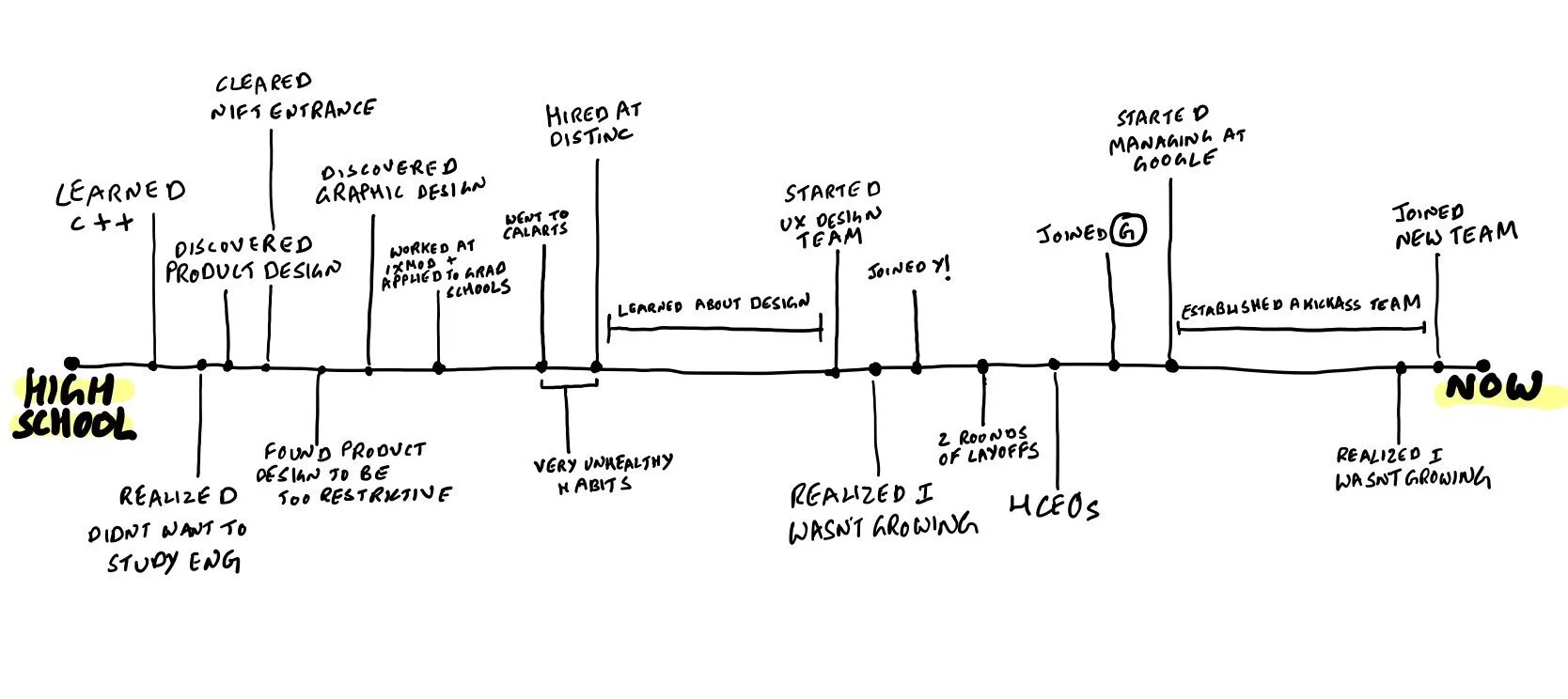The first career conversation
I have a career conversation with new hires on my team pretty soon after they first start on the team. The objective of this career conversation is for me to get to know them, what drives them, what can be demotivating etc. This is a template I developed and refined over the last few years.
Hope this is helpful!
EXERCISE: CAREER PROGRESS TIMELINE
As the meeting starts, I ask the new team member to draw a career timeline on a whiteboard. In a remote setting they would do it on a piece of paper. I ask them to map two kinds of events on the timeline: Highlights and Lowlights. The timeline starts when they want it to start (for example, some people knew in high school what they wanted to do) and ends today.
The highlights and lowlights can be big events like Started a new job, Got laid off or small events like Received recognition from the VP, Got frustrated because I couldn’t figure out a solution. They chart highlights above the line, and lowlights below it.
I leave them alone for 15-20 minutes to complete this exercise. Purely because I don’t want to be hovering as they think.
An example of what this might look like
I return after 20 minutes and ask them to walk me through the timeline. For every highlight and lowlight I ask them for the why behind it. For example, why is it a highlight that you won an award? Was it because of the recognition? Or the doors it opened for you? Or got you resources for further projects? etc.
As we walk through this together a pattern typically emerges. Every single person I have done this exercise with will repeat the same reasons over and over again for the highlights. It’s either that they are driven by the people they work with, or a higher purpose, or just the activity of learning, or recognition. There have been other themes, but there is always a theme.
That theme is their motivator. THIS is the most important thing I can learn about a new teammate. If I know what motivates them, I can ensure they have an abundance of that motivation in their day to day.
The lowlights also tell me a lot. First, it tells me what can make them demotivated. Second, it gives me background. For example, if someone has been fired in a previous job, I might put in extra effort in positive reinforcement and recognition.
After the exercise we chat about this new job, whether they feel they have the right opportunities and if not, we create a plan to make that happen.
Try this exercise the next time you hire someone new! And if you do, drop me a line coz I would love to hear how it goes.
